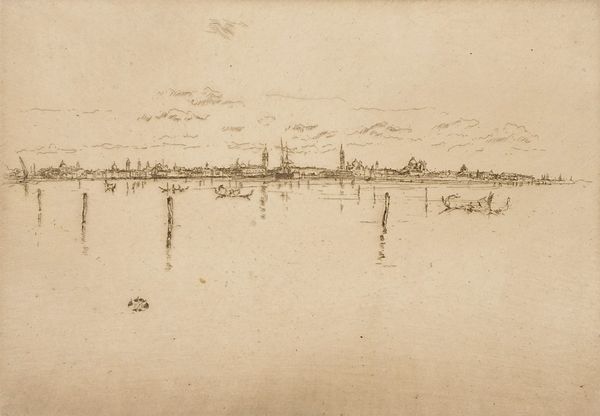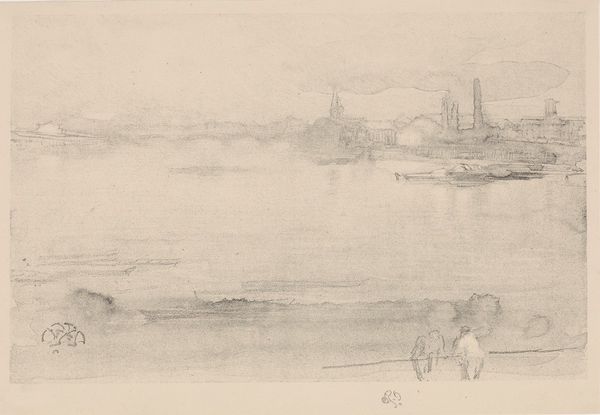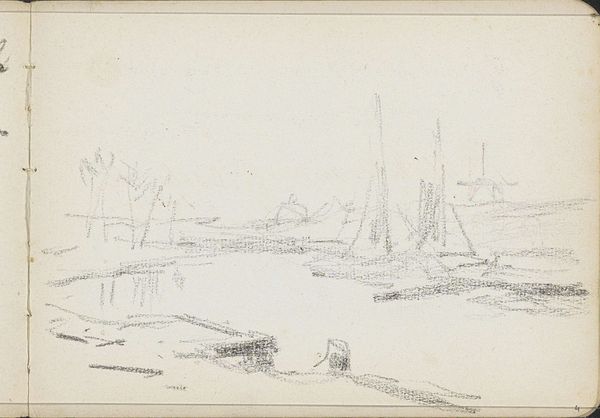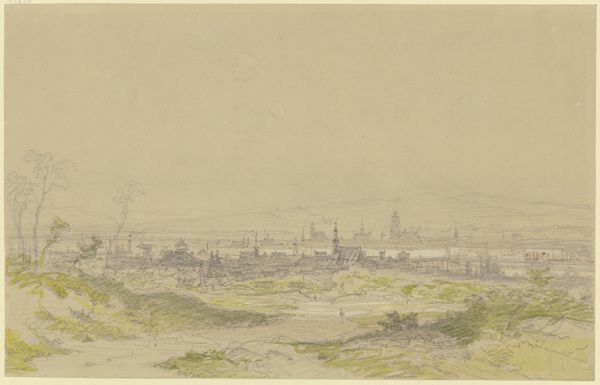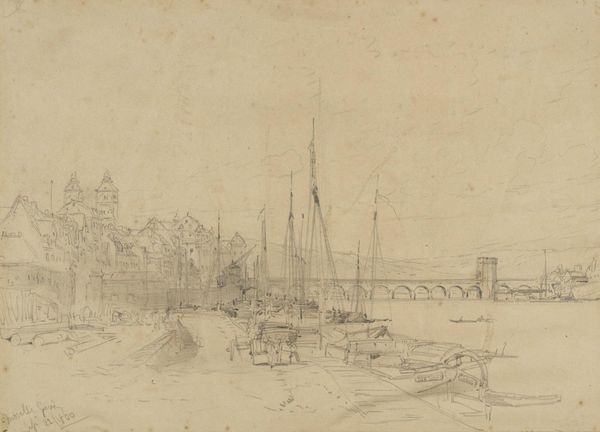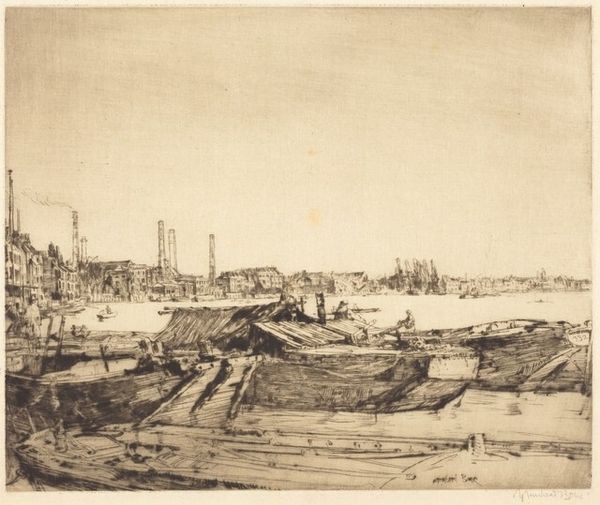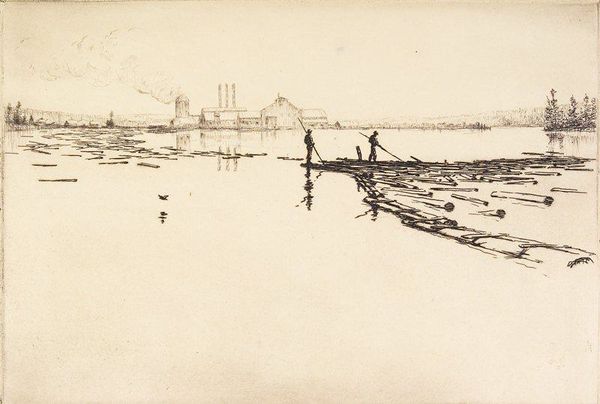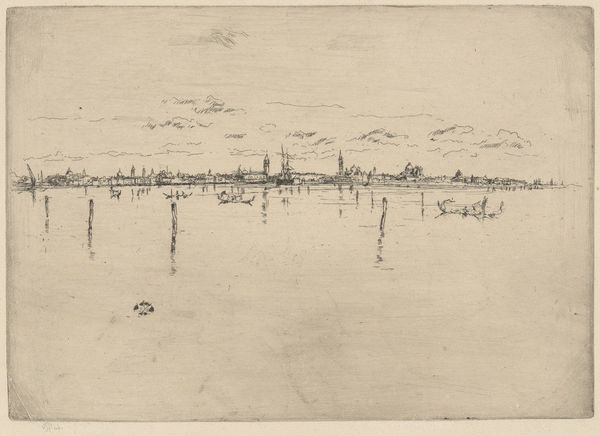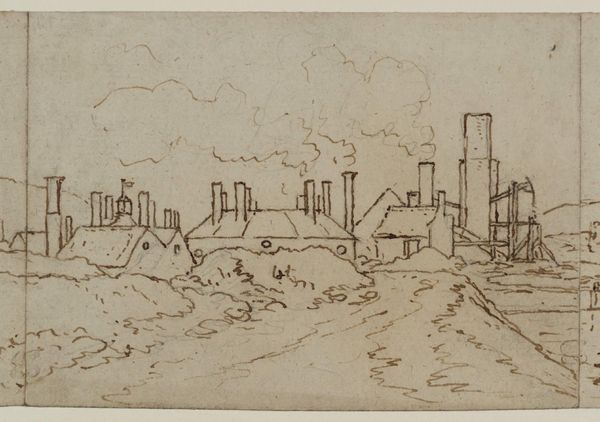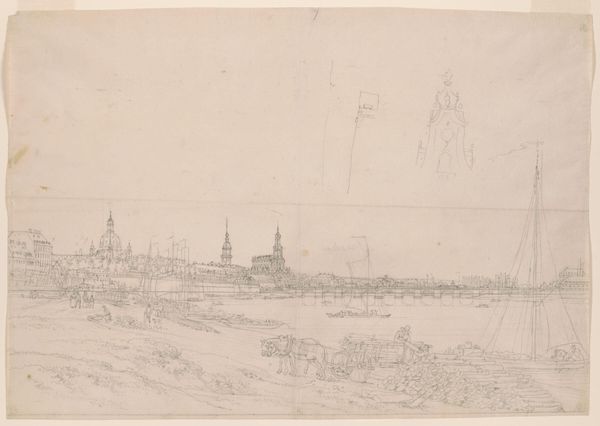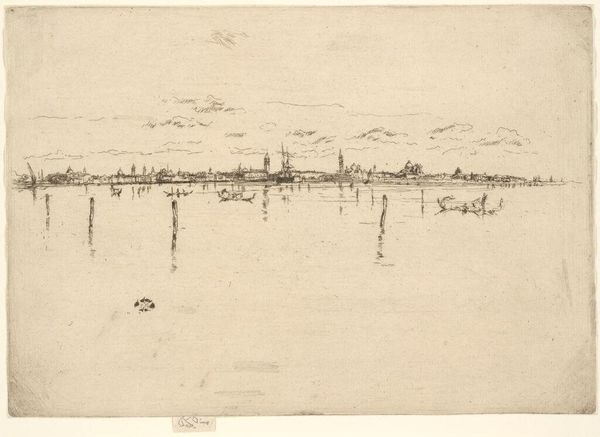
drawing, pencil
#
drawing
#
impressionism
#
landscape
#
pencil
#
cityscape
Copyright: Public Domain: Artvee
Curator: Ah, yes, "Battersea Morn," a pencil drawing crafted around 1875 by James Abbott McNeill Whistler. The artwork really evokes something specific, doesn't it? Editor: It's...muted. Quiet, almost. A haze seems to hang over everything, softening the edges of what appears to be an industrial riverfront. Curator: The cityscape is almost skeletal. Note how Whistler captures not just the *appearance* of Battersea, but also its essence, its industrialized spirit translated through a stark visual language. The towers and chimneys rise like secular cathedrals. Editor: You’re right, those smokestacks are practically aspirational. But my eyes keep going to the boats in the foreground. Rudimentary, quickly sketched. There’s a contrast between those rough representations of labor and the grander, but equally labor-intensive factories behind them. How conscious do you think this opposition was? Curator: Whistler was deeply interested in the visual language of suggestion rather than explicit statement. The boat evokes a connection to a working past, with only slight connections to the factory industry on the banks. I think he absolutely meant for those foregrounded boats to serve as anchors to deeper considerations of commerce and its evolution. Editor: Pencil seems the perfect choice. It’s such a readily available material, and somehow suits the industrial subject. I imagine him rapidly sketching this on site, the immediacy of the material is palpable. It doesn't feel fussy or precious at all, in alignment with an industrial site dedicated to mass production. Curator: Yes, pencil grounds this in a material reality. This wasn't meant to be grandiose. Consider the symbolism of a “Battersea Morn” rendered in such monochrome humility—what cultural value lies in honoring, in memorializing, an urban sunrise over labor and industry? Is it truly beautiful, or beautiful only because Whistler saw it, and thus showed it to us? Editor: Perhaps it's about revealing the potential for beauty in the everyday. Whistler, by drawing this scene in pencil, elevates the ordinary. We can also acknowledge the soot, smoke and manual labor embedded within the ‘beauty’ you’ve noted; both material and labor combine within the same site. Curator: A poignant dance of aesthetics and ethics! It's this convergence that I find especially compelling. Editor: Definitely a lot to unpack in a seemingly simple sketch.
Comments
No comments
Be the first to comment and join the conversation on the ultimate creative platform.
